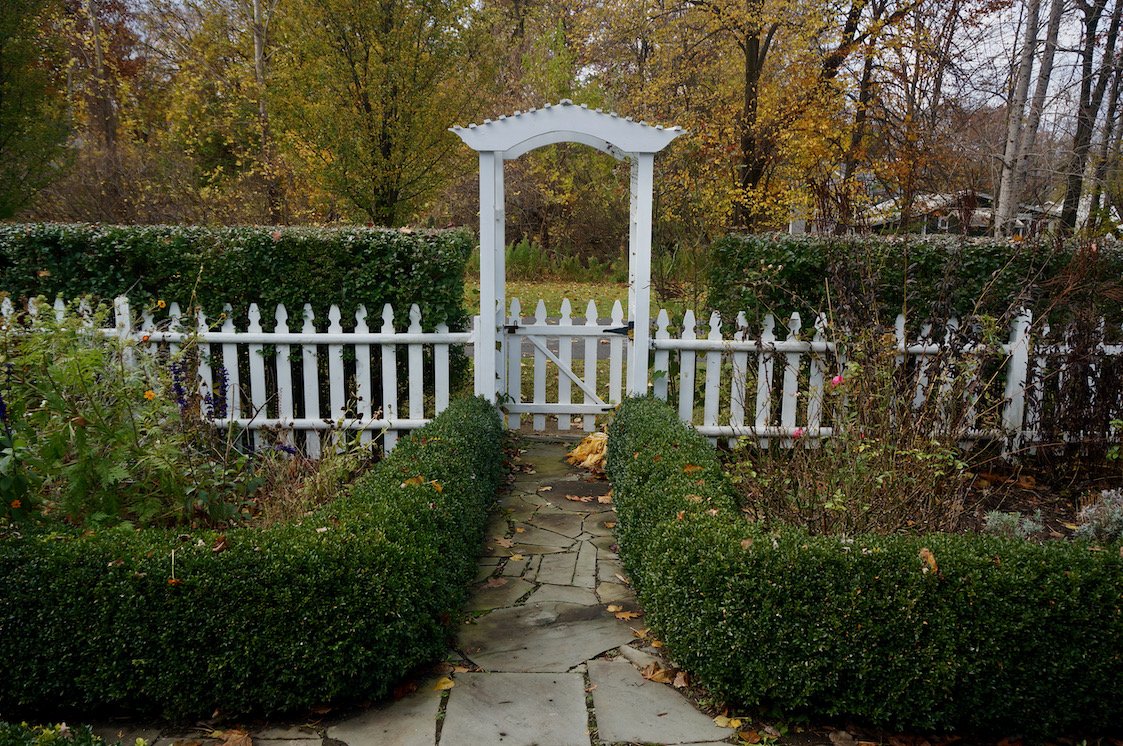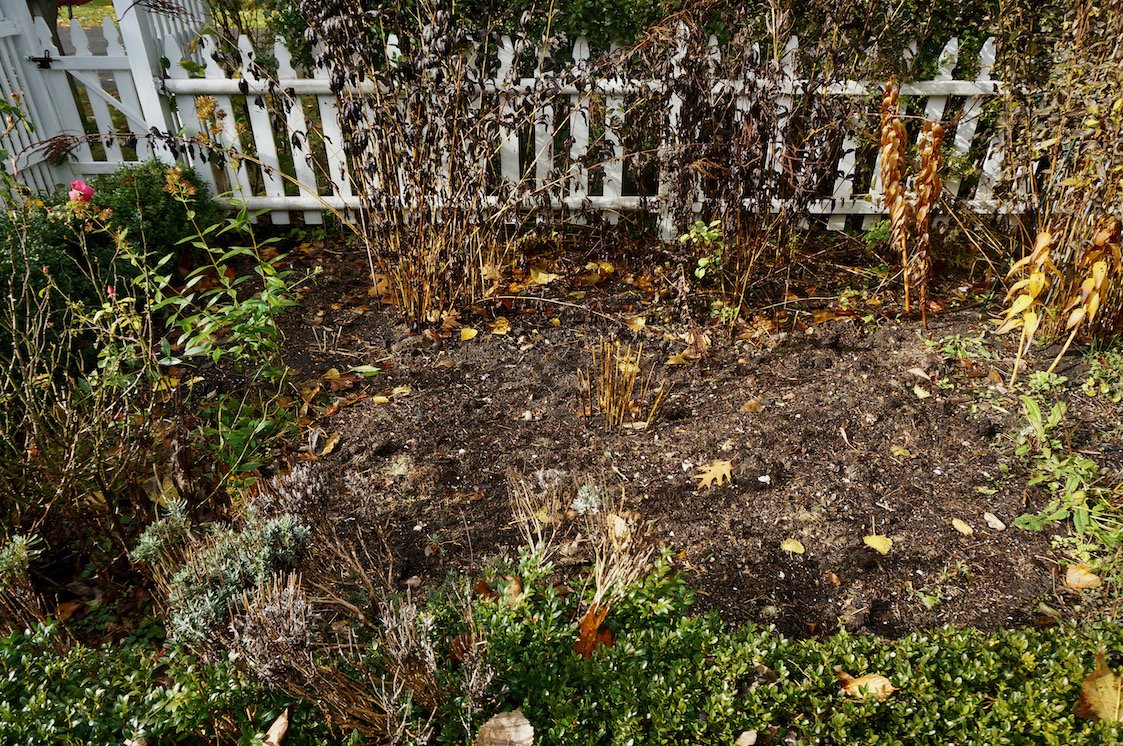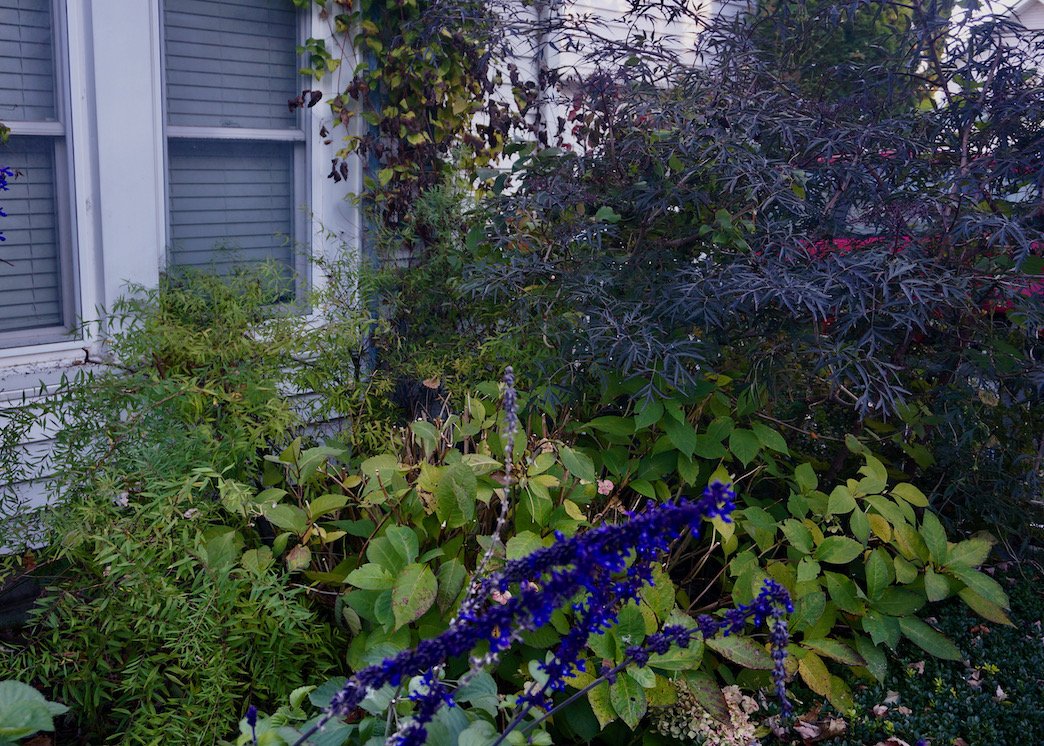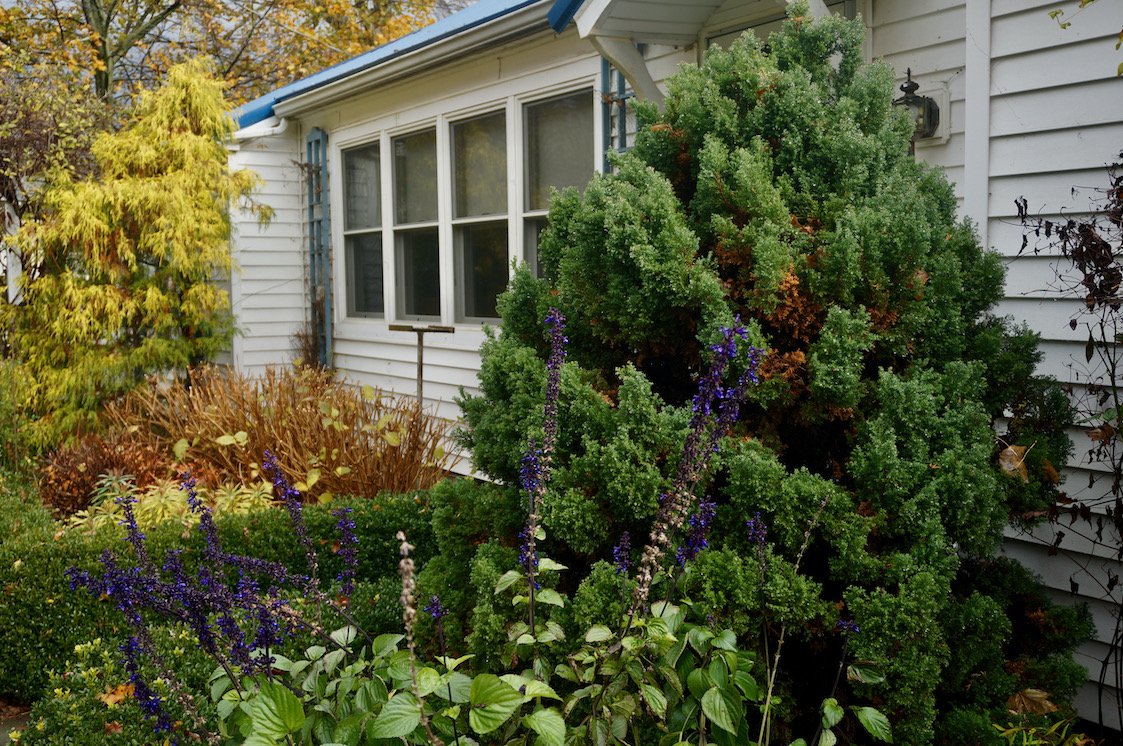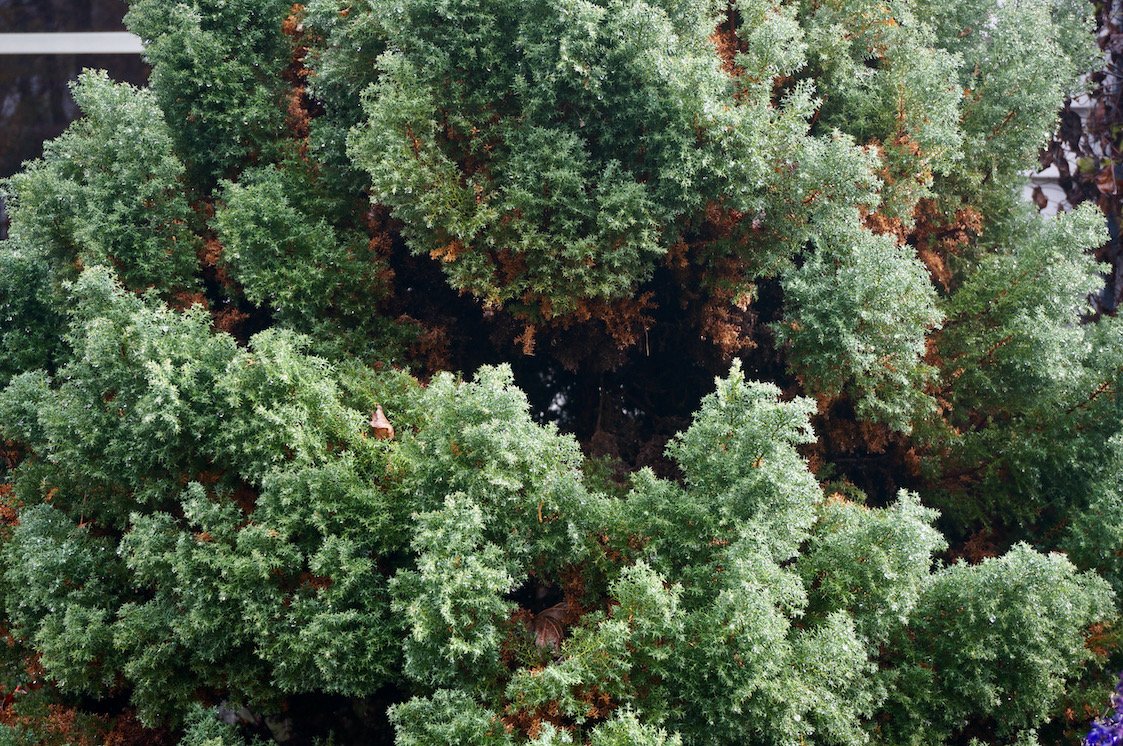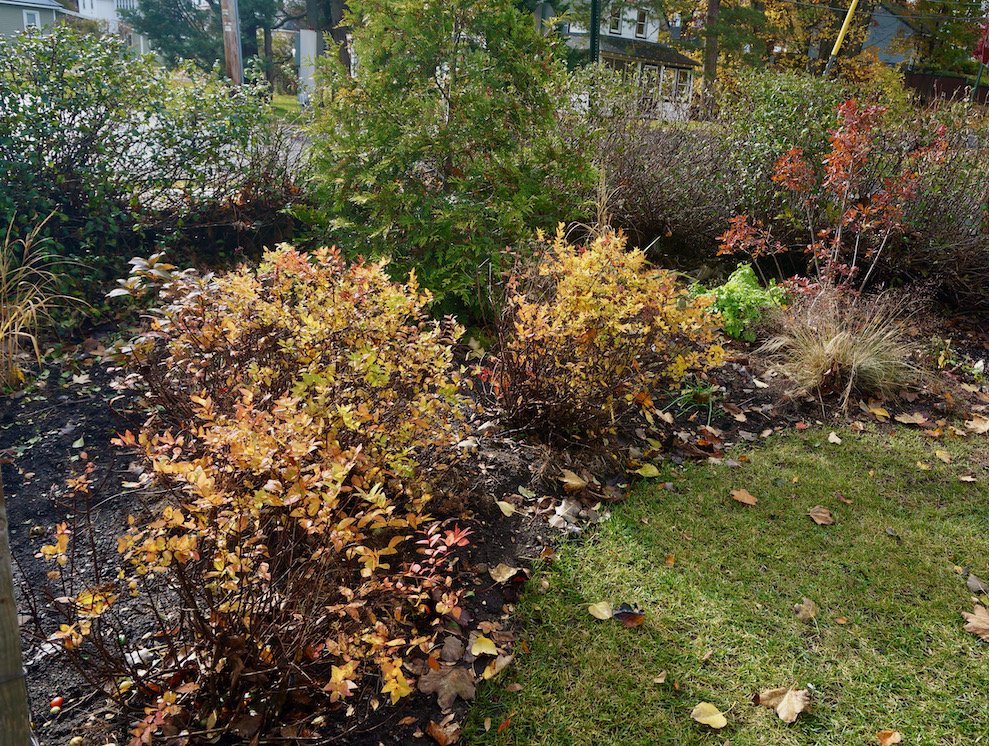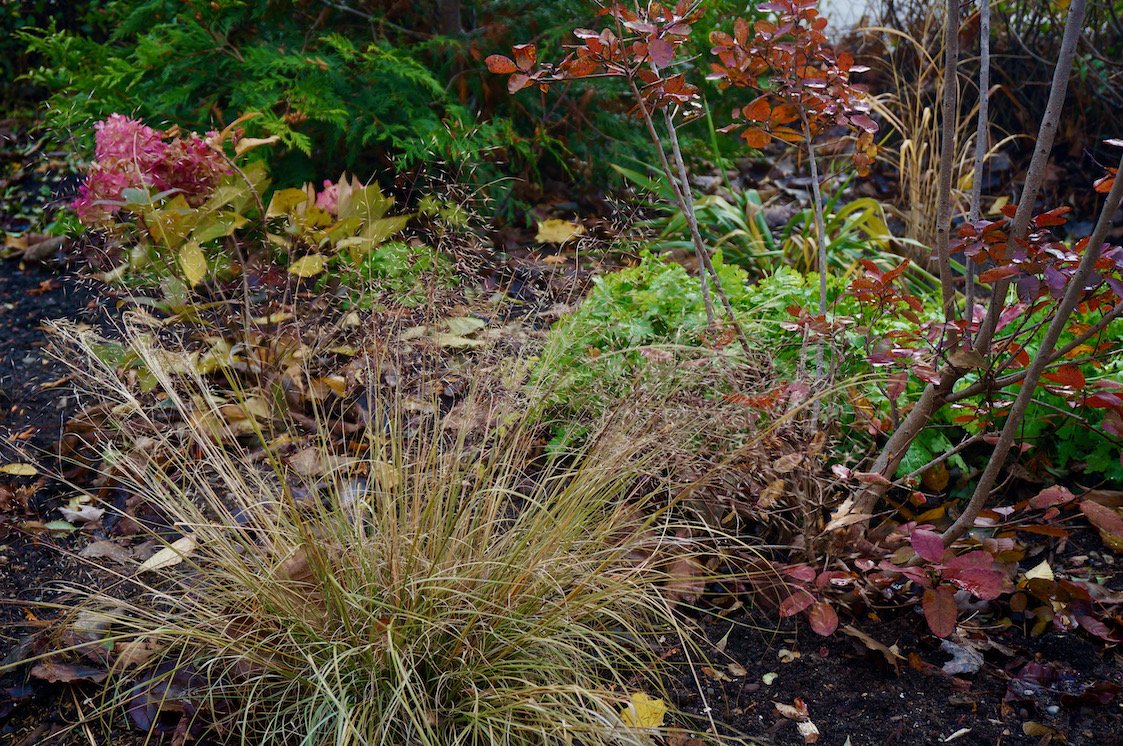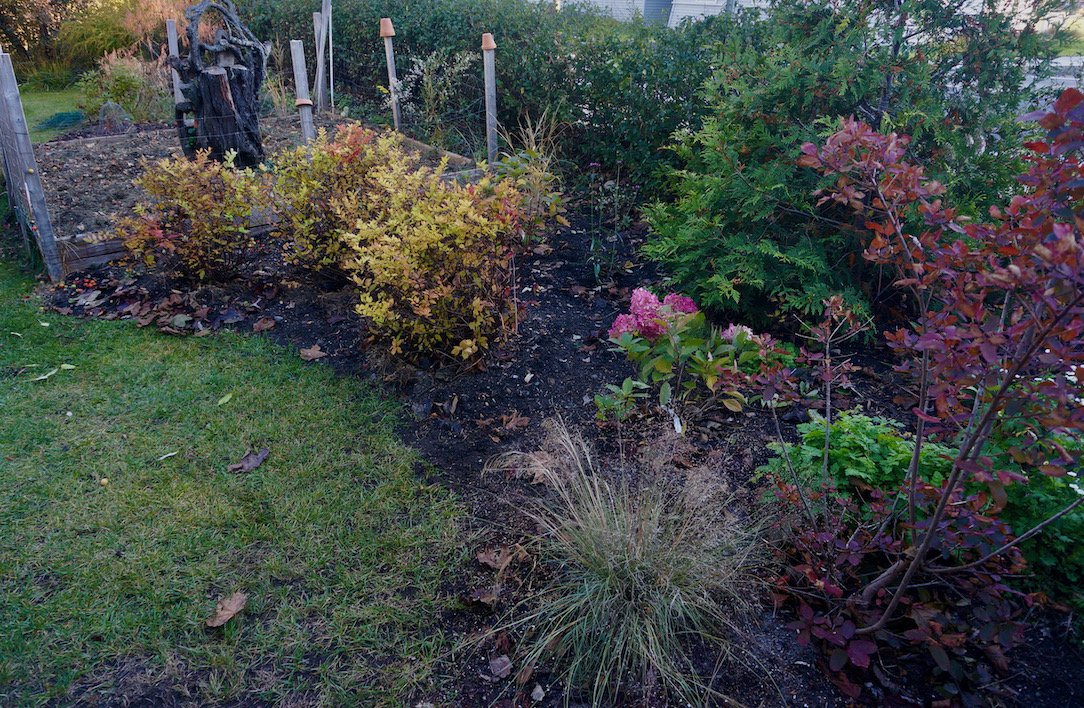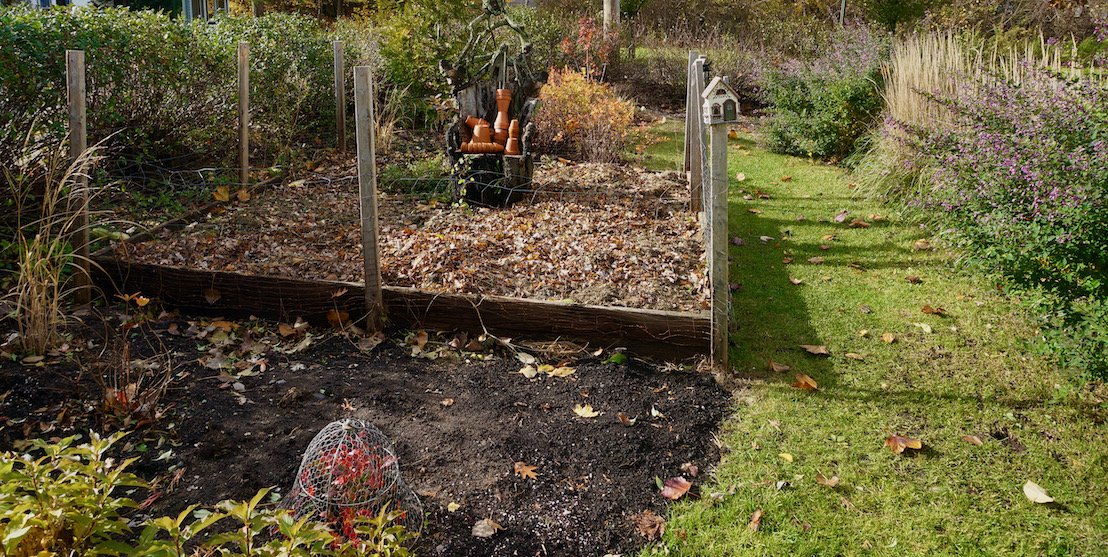Tough digging, tricky pruning, and plans: 4 gardening lessons learned
An awareness of overdue editing prompted my September post: Too little space, too many blobs? How to look at your garden with fresh eyes. It led to heavy duty digging, hard pruning, resolutions about what not to plant going forward and a growing plant list.
For those of you who haven’t gotten around to picking up your shovel, I hope to encourage you. After all, we have plenty of time to implement changes in spring and all winter to dream about our future gardens.
Lesson 1: Dig in small doses - it’s less disheartening and easier on the body. After spending most of a beautiful October afternoon wrestling two overgrown Baptisias out of the ground, my back was killing me and my knees ached. I cursed myself for ever planting them and vowed to give up gardening.
For those of you have never moved a Baptisia, it has a long woody tap root that goes straight to China. I went after it with an ax, a shovel and all the grit I could muster. The octopus like roots that branched off the main stem were equally daunting and impossible to get at. I’m sure I’ll be digging out more roots come spring. I don’t want to diss Baptisia, it’s a terrific perennial but it grows into a shrublike mound that requires tons of room. I can’t imagine trying to divide it successfully either. The good part of this experience was that it caused me to think more honestly about root systems and growth habits of any future introductions.
Such perennials aren’t good in small gardens. As you can see from the bare spot left behind, this one took up more room than I had.
Another bold move - I dug out three Spirea ‘Gold Mound’ here (above photo). I know - taking out so many plants was a little scary, but now there’s room to have some fun. I want a more relaxed look with plenty of texture, bold leaves and possibly a new color scheme. Plants on the list so far: Alium ‘Millenium’, Perovskia ‘Blue Jean Baby’- a shorter version of Russian Sage, Verbascum bombyciferum (love the foliage), Monarda fistula and Schizachrium scoparium ‘Standing Ovation’ - an intriguing dwarf little bluestem.
On the other side of the garden, I pruned Hydrangea serrata ‘Lady In Red’ (below photo) back as hard as I dared. No flowers for me next summer because it blooms on old wood, but I wanted to be able to see out my windows. After all, you can’t have everything. Going forward, I’ll maintain them at a lower level.
Lesson 2: Plant dwarf shrubs in small spots like this. Denial of future size leads to dissatisfaction later. Isn’t if funny how you think things will never get bigger even though you know better?
I pruned the hydrangeas to the other side of the front door as well, plus a Spirea ‘Ogon’ I shouldn't have planted here. What can I say? I fell in love with the wiry gold foliage. Fortunately it tolerates hard pruning.
I don’t even know how to explain the big blob to the right of the front door, Chamaecyparis ‘Blue Feathers’. Here’s the description I found in a catalogue: great for the small space garden, compact, slow growing height 3-4 ft. I wonder what garden that was in? Obviously not mine.
Chamaecyparis ‘Blue Feathers’
I think my options here are limited. I could prune the new growth in early summer or layer it to make it look like less of a blob. Worst case scenario, I’ll get rid of it…oh well.
Lesson 3: Pay attention to shrubs that are getting big before they become problematic. Get first hand information about a plant I know nothing about from someone who’s grown it.
Moving along to part two of my editing project, I turned the two small patches of lawn on either side of the vegetable garden into one continuous bed. Before planting, I stripped off the grass and covered it with a thick layer of compost and soil. Below you can see the the gold spireas I transplanted.
I added several new plants. On the left is Hydrangea ‘Fire Light Tidbit’, a recent Proven Winners addition I received to trial. This dwarf panicle is described as maturing at 2-3,’ and the late flowers are a lovely treat. To the right is a Muhly grass I couldn’t resist. Yeah, I know it isn’t zone hardy in northern climates, but this new introduction ‘Undaunted’ will grow in zones 5-6 (so the tag says). I only bought one, but if it does well, I’m buying more.
I like the layered effect and the way the plants draw your eye around the curve.
Here’s the other side in the photo below. Toward the back of both beds I planted Panicum virgatum ‘Blue Fountain’ to layer in a bit more height. It matures at 7’ (hopefully will obscure the view of the street) and stays upright. I thought the blue green leaves would contrast nicely against the gold and magenta colors I’ve put there. In the forefront, I have high hopes for Aronia meleancarpa ‘Low Scape Mound,’ described as a dwarf (12-24”). One can only hope, but I do have room for it to get bigger. Glossy green foliage that turns bright red - what could be better? Now if I can just keep the deer off of it ….
I plan to transplant a clump of Aster oblongifolius ‘October Skies’ growing in another part of this garden and possibly add more muhly grass to the border.
Lesson 4: It’s never too late to make changes. I didn’t get around to doing everything this fall, but I still have a big window of time in spring. Meanwhile, I’ve scoured the rest of my gardens for plants I could move into these new areas.
With a plan and a growing list, I’m ready to hunker down by the fire with a pile of plant catalogues.

